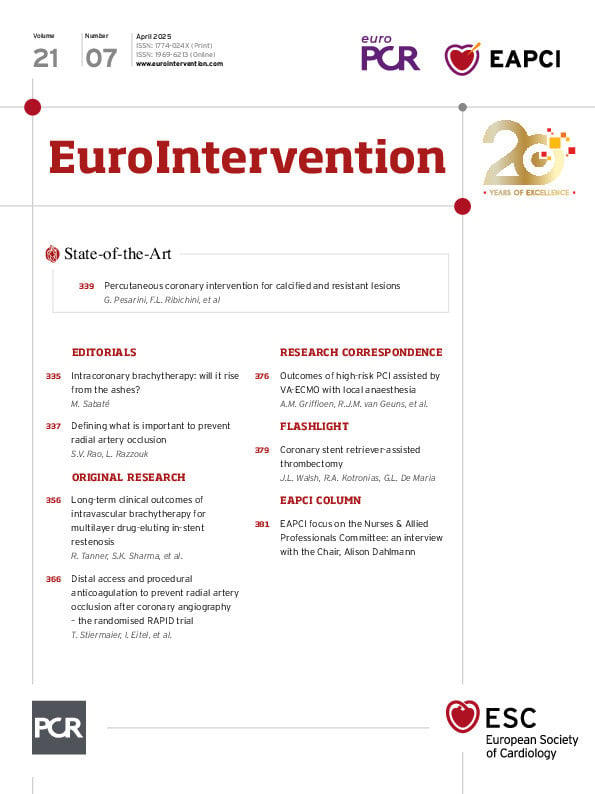High-risk percutaneous coronary intervention (PCI) is increasingly performed because of an ageing population with a high incidence of comorbidities and high surgical risk scores1. Veno-arterial extracorporeal membrane oxygenation (VA-ECMO) is an effective method to prevent haemodynamic deterioration during high-risk PCI. VA-ECMO is mainly surgically deployed under general anaesthesia. New developments have facilitated a completely percutaneous insertion of VA-ECMO with local anaesthesia, reducing operating team sizes and enabling early mobilisation after PCI without the need for intensive care unit (ICU) admission.
This study is a single-centre registry that included all patients undergoing high-risk PCI with VA-ECMO support between January 2020 and March 2024 at the Radboud University Medical Center in Nijmegen, the Netherlands. The study design has been previously described in detail2. Preprocedural angiographic computed tomography (CT) scans were performed in all cases to assess peripheral access. The procedural set-up for VA-ECMO (de)cannulation was similar for all cases (Supplementary Figure 1, Moving image 1).
Procedural success was defined as successful revascularisation (final residual stenosis <50% with a Thrombolysis in Myocardial Infarction flow grade 3, achieved in at...
Sign up for free!
Join us for free and access thousands of articles from EuroIntervention, as well as presentations, videos, cases from PCRonline.com

